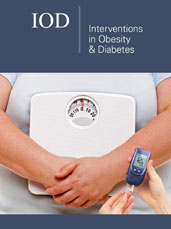- Submissions

Abstract
Interventions in Obesity & Diabetes
Heavy Metal-Induced Beta Cell Dysfunction: A Converging Pathway to Type 2 Diabetes and COVID-19 Complications
-
Open or CloseMosab Nouraldein Mohammed Hamad*
Assistant Professor of Microbiology, Excellence Research Center, Elsheikh Abdallah Elbadri University, Sudan
*Corresponding author:Mosab Nouraldein Mohammed Hamad, Assistant Professor of Microbiology, Excellence Research Center, Elsheikh Abdallah Elbadri University, Berber, Sudan
Submission: July 18, 2025;Published: August 06, 2025

ISSN : 2578-0263Volume7 Issue1
Abstract
Emerging evidence indicates that chronic exposure to environmental toxicants, particularly cadmium and lead, may play a significant role in the development and exacerbation of Type 2 Diabetes (T2D). This review highlights that 100% of analysed fast food samples contained cadmium at levels ranging from 74% to over 1100% higher than the U.S. EPA’s safety limit for drinking water, suggesting that fast food is a substantial and under recognized source of cadmium exposure. Such exposure is particularly concerning in communities experiencing a “double burden” of high fast-food density and limited access to healthier dietary options. Cadmium and lead have both been shown to impair pancreatic beta cell function through oxidative stress, inflammation, mitochondrial dysfunction, and interference with insulin secretion and signalling pathways. These mechanisms contribute directly to insulin resistance and beta cell apoptosis, increasing the risk of T2D onset and progression. Furthermore, these metals compete with essential elements such as zinc, further disrupting glucose metabolism.
The COVID-19 pandemic has revealed a dangerous synergy between diabetes and viral infection. SARS-CoV-2 targets ACE2 receptors on beta cells, leading to cellular damage, insulin deficiency, and acute hyperglycaemia. In individuals with pre-existing diabetes or those already exposed to cadmium or lead, this interaction may intensify beta cell dysfunction and increase the severity of COVID-19 outcomes. These findings strengthen the hypothesis that environmental exposure to cadmium and lead not only contributes to metabolic disease but also enhances vulnerability to infectious agents such as SARS-CoV-2. The evidence underscores the need for targeted public health strategies to reduce toxic metal exposure, especially in high-risk populations, and calls for further interdisciplinary research into the combined effects of environmental toxicants and viral infections on metabolic health
Keywords:Cadmium exposure; Lead toxicity; Type 2 diabetes; Pancreatic beta cells; COVID-19
 a Creative Commons Attribution 4.0 International License. Based on a work at www.crimsonpublishers.com.
Best viewed in
a Creative Commons Attribution 4.0 International License. Based on a work at www.crimsonpublishers.com.
Best viewed in 







.jpg)






























 Editorial Board Registrations
Editorial Board Registrations Submit your Article
Submit your Article Refer a Friend
Refer a Friend Advertise With Us
Advertise With Us
.jpg)






.jpg)














.bmp)
.jpg)
.png)
.jpg)










.jpg)






.png)

.png)



.png)






